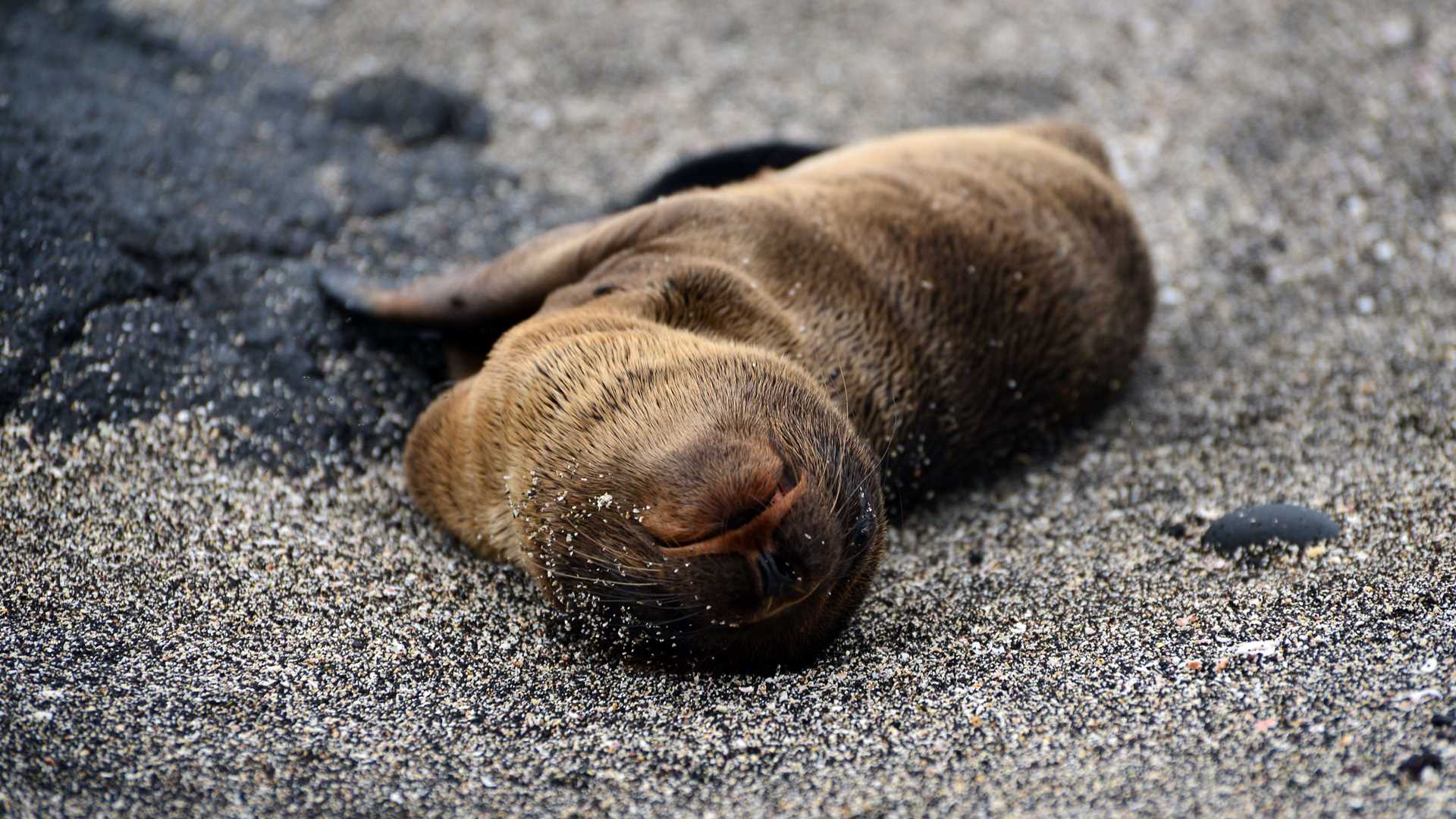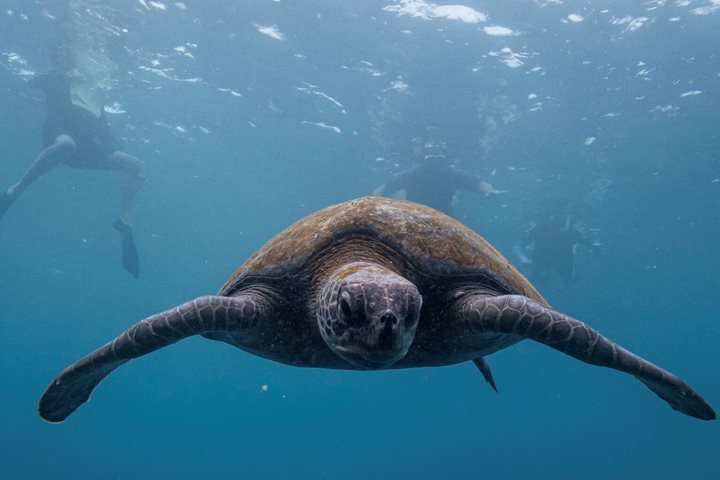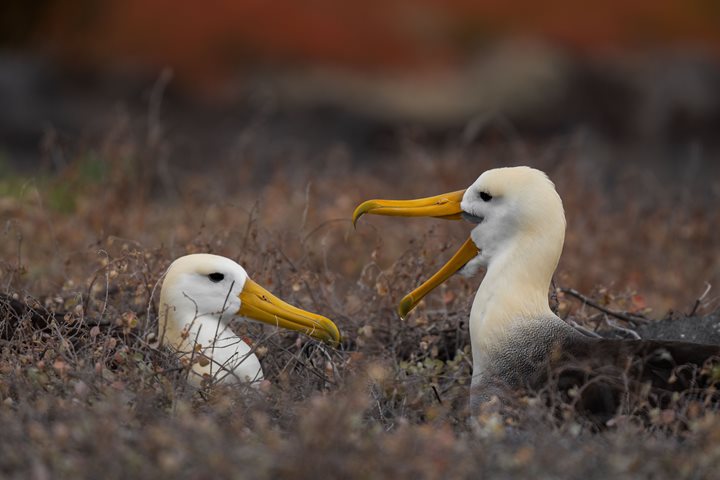Our morning expedition took us to the northern region of Isabela Island in the Galápagos archipelago. The day started early with an exciting circumnavigation of Roca Redonda before breakfast. Located off the northern coast of Isabela Island, Roca Redonda is the summit of a submarine volcano. It rises 70 m from the ocean and nearly 3 km from the adjacent seafloor. This impressive formation has dramatic cliffs with an abundance of nesting birds. We observed colonies of Nazca and blue-footed boobies, frigatebirds, and brown pelicans, all gracefully perched on the rugged rock formation. Our aim was to explore the rich biodiversity and natural beauty of this remote part of the world.
After an exhilarating journey around Roca Redonda, we crossed the equator from the northern to the southern hemisphere. This unique experience allowed us to stand on both sides of the world simultaneously, a memorable moment for our guests. We observed the gigantic Ecuador Volcano. The collapsed caldera from thousands of years ago demonstrated a violent geological past.
After breakfast, we took a dinghy ride along the coastline of Vicente Roca for up-close views of the rugged cliffs, hidden coves, and crystal-clear waters. We were impressed by the geology and wildlife that inhabit this remarkable area. We observed the two flightless birds that inhabit the Galapagos: Galapagos penguins and flightless cormorants. Marine iguanas basked on the rocky shores, and playful sea lions frolicked in the surf. The highlight of the morning was a deep-water snorkeling session. The nutrient-rich waters of Punta Vicente Roca teem with marine life, and we had the privilege of encountering a variety of species, including colorful reef fish, sea turtles, and schools of eagle rays. The underwater world of the Galápagos is a sight to behold, and we were captivated by the beauty and diversity beneath the waves.
After a short navigation in the afternoon, we arrived at Punta Espinoza on Fernandina Island. We were eager to explore the remarkable environment and unique wildlife. We walked through huge lava flows that are the result of recent eruptions. Every step revealed the harsh beauty of this pristine island. While hiking, we had the rare opportunity to witness an astonishing natural spectacle. We observed a snake, likely a Galápagos racer, devouring a lava lizard. This rare and fascinating event provided a glimpse into the harsh reality of survival in this unique ecosystem. Nature offered many insights into the intricate web of predator-prey relationships in the Galápagos.
The Galápagos Islands continue to amaze us with their unique and diverse natural wonders, and we left these sites with a deep appreciation for the incredible biodiversity of this remote paradise. Our expedition continues, and we eagerly anticipate the adventures that await us in this pristine part of the world.







